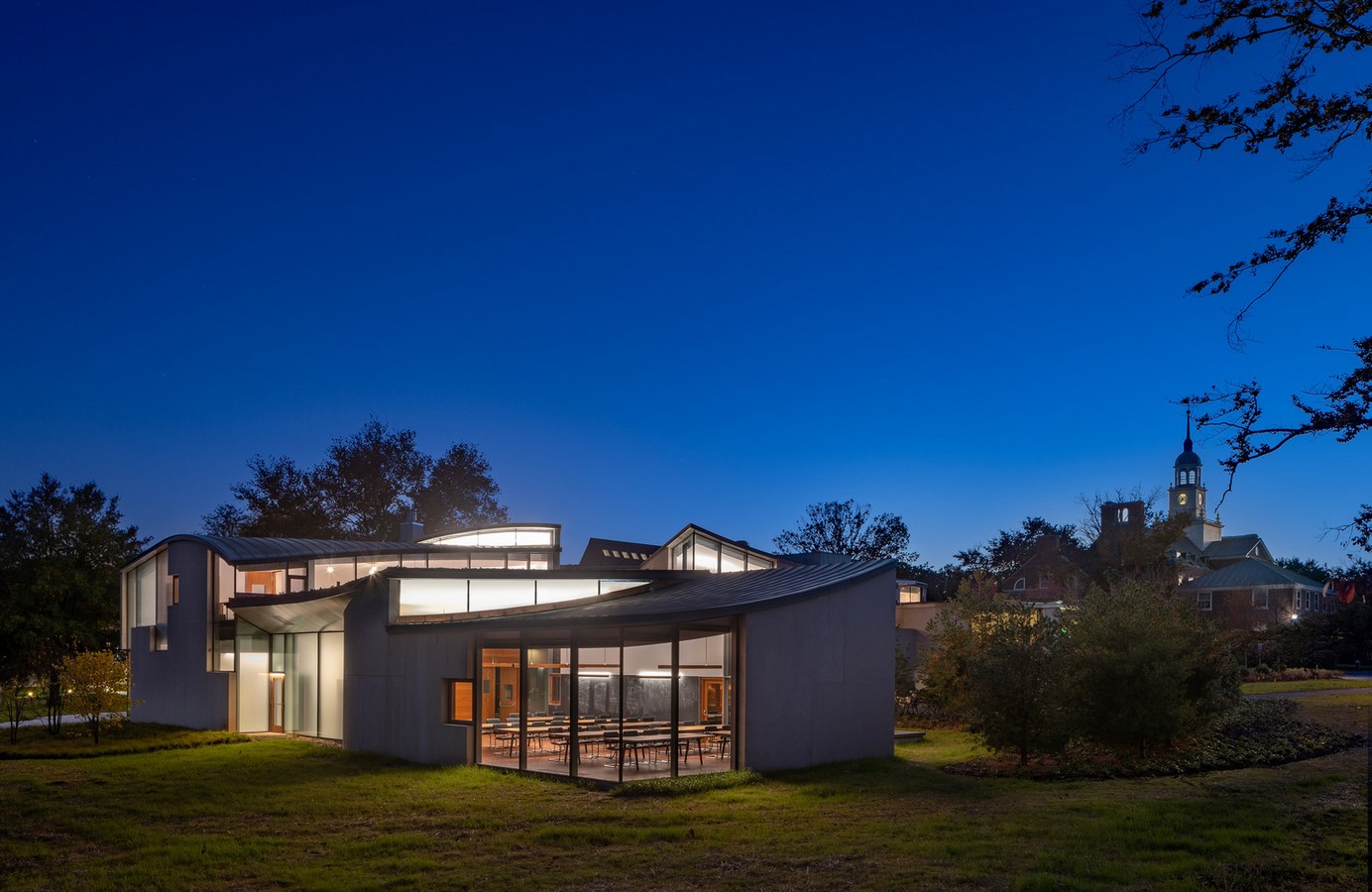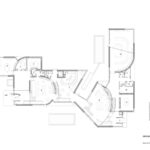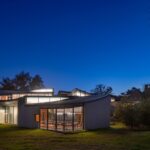The Rubenstein Commons at the Institute for Advanced Study (IAS) in Princeton, NJ, represents a new chapter in the institution’s storied history. Situated near Fuld Hall, where Albert Einstein once pondered the mysteries of the universe, this new commons building embodies a commitment to community and academic life on the IAS campus.

Embracing Intertwining Design
Driven by the concept of intertwining, the design of Rubenstein Commons seamlessly integrates exterior circulation with interior spaces. Functioning as a social condenser, the building features a variety of flexible meeting areas that foster collaboration and exchange among scholars. Following the existing topography, the building offers views of the surrounding courtyards and landscape.
Harmonizing with Nature
The building’s design forms an organic connection with the surrounding landscape, featuring pools of water on the north, south, and west sides. These pools reflect sunlight into the interior spaces, creating an atmosphere conducive to reflection and contemplation. This harmonious blend of natural phenomena with science, physics, humanities, and art reflects the Institute’s overarching mission.

Curvature and Illumination
The geometry of the interior spaces is defined by “space curves,” where non-planar curves intersect. These curved ceilings, as noted by former IAS Director Robbert Dijkgraaf, provide ample space for the “thought bubbles” of scholars. Blackboards made of natural slate line the interiors, paying homage to the Institute’s tradition of intellectual curiosity. Prismatic glass and custom hand-blown light fixtures infuse the spaces with natural light and vibrant colors, enhancing the overall ambience.
Seasonal Landscape and Sustainable Features
The surrounding landscape is carefully curated to reflect the passage of time through the four seasons. Geothermal wells, powered by the earth’s seasonal temperature cycles, heat and cool the building efficiently. Wood-framed windows facilitate natural ventilation, bringing light and air into every corner of the building. Inspired by knot theory, custom door handles and waterspouts greet visitors at the building’s entrances, adding a touch of elegance and symbolism to the architectural ensemble.
By seamlessly blending architectural innovation with sustainable design principles, Rubenstein Commons stands as a testament to the Institute’s commitment to excellence and collaboration in the pursuit of knowledge.
















